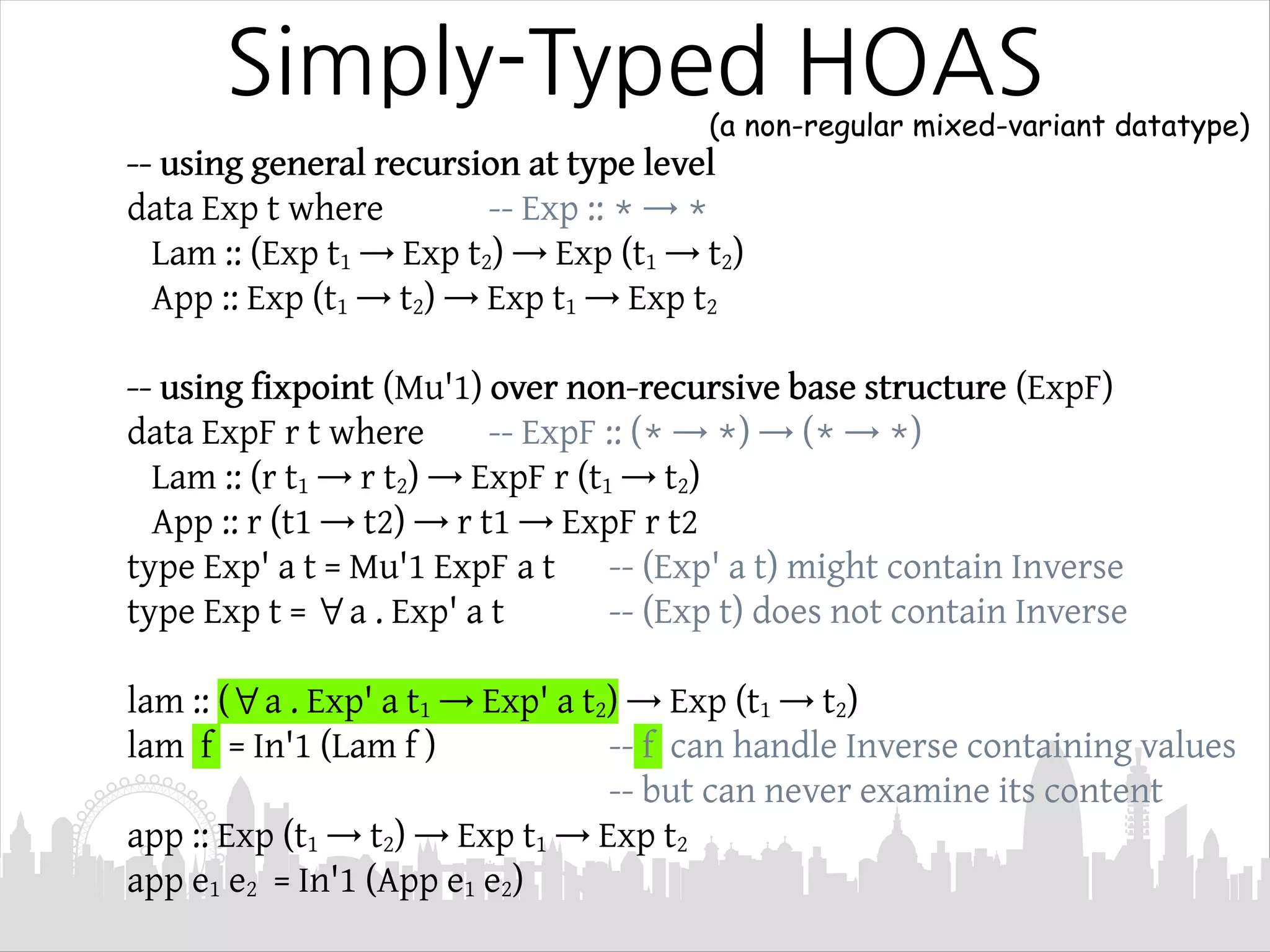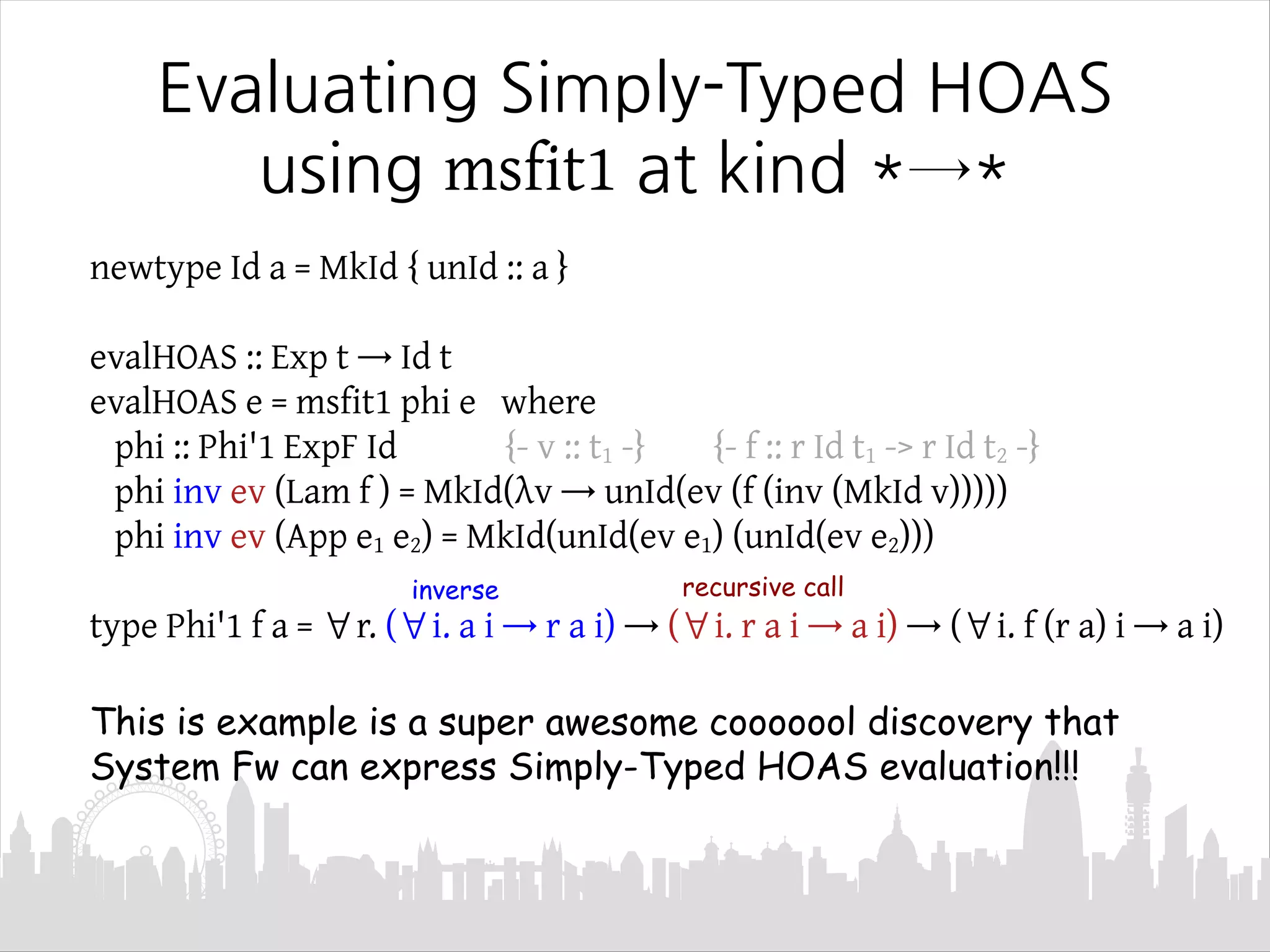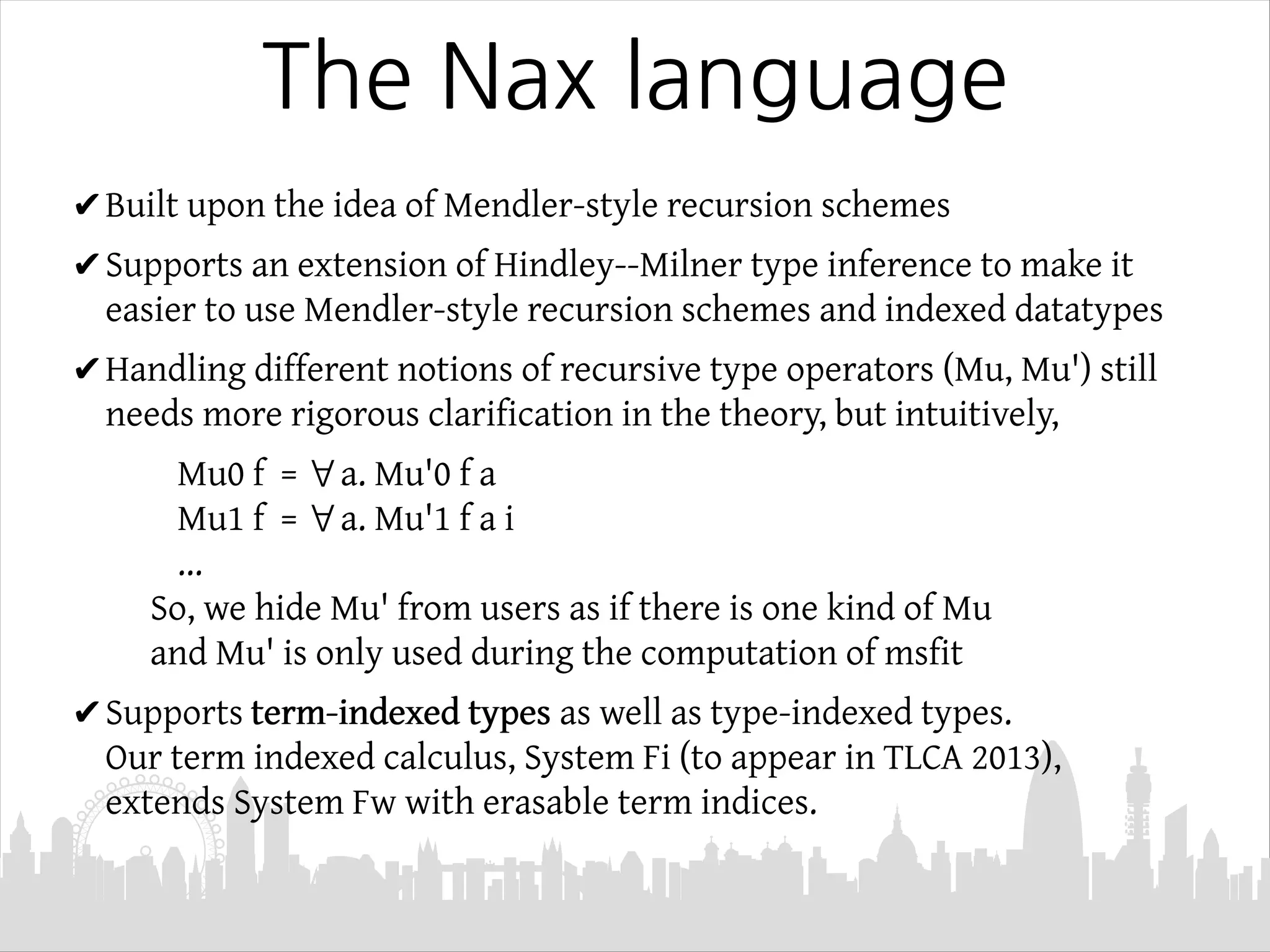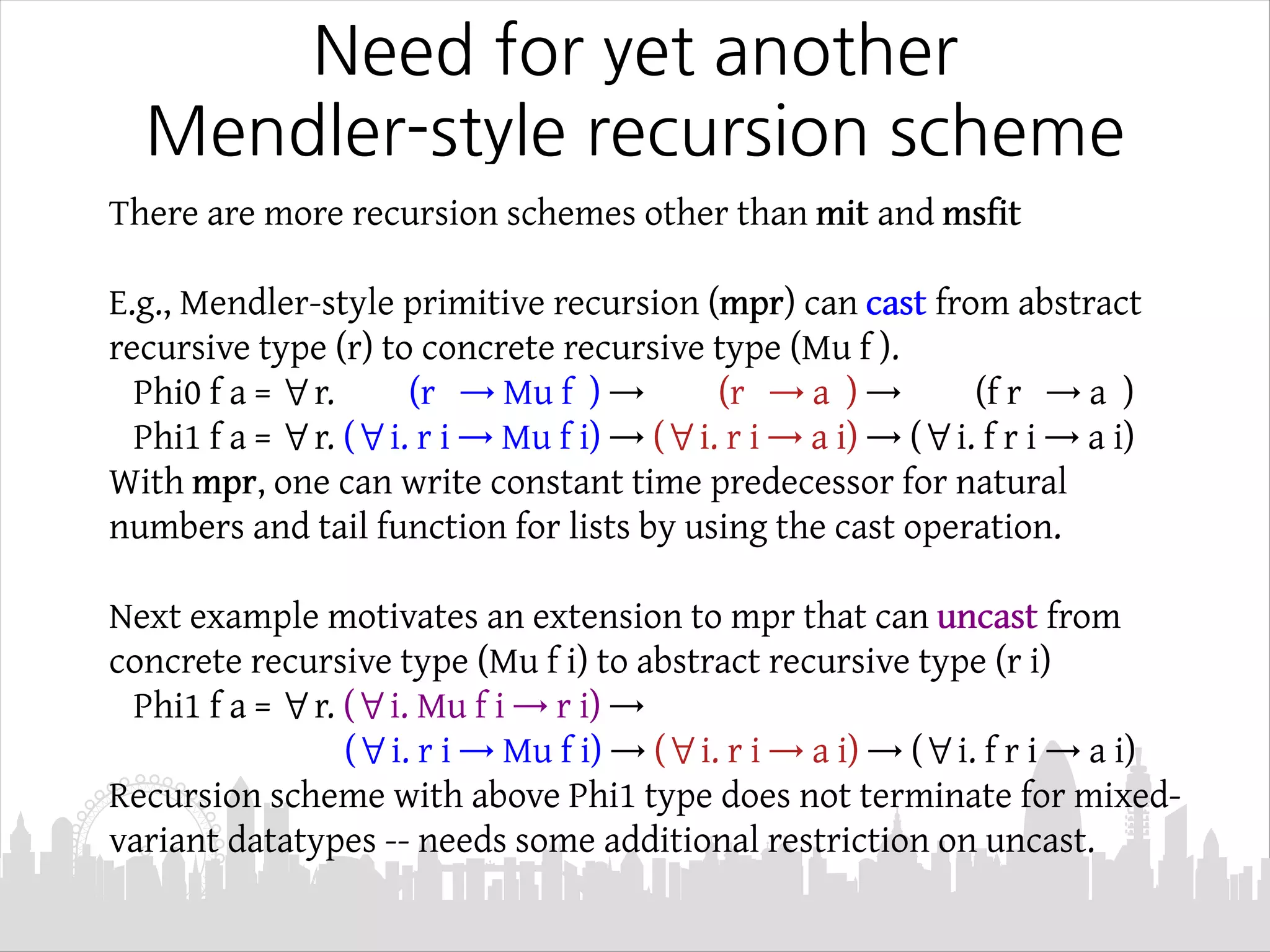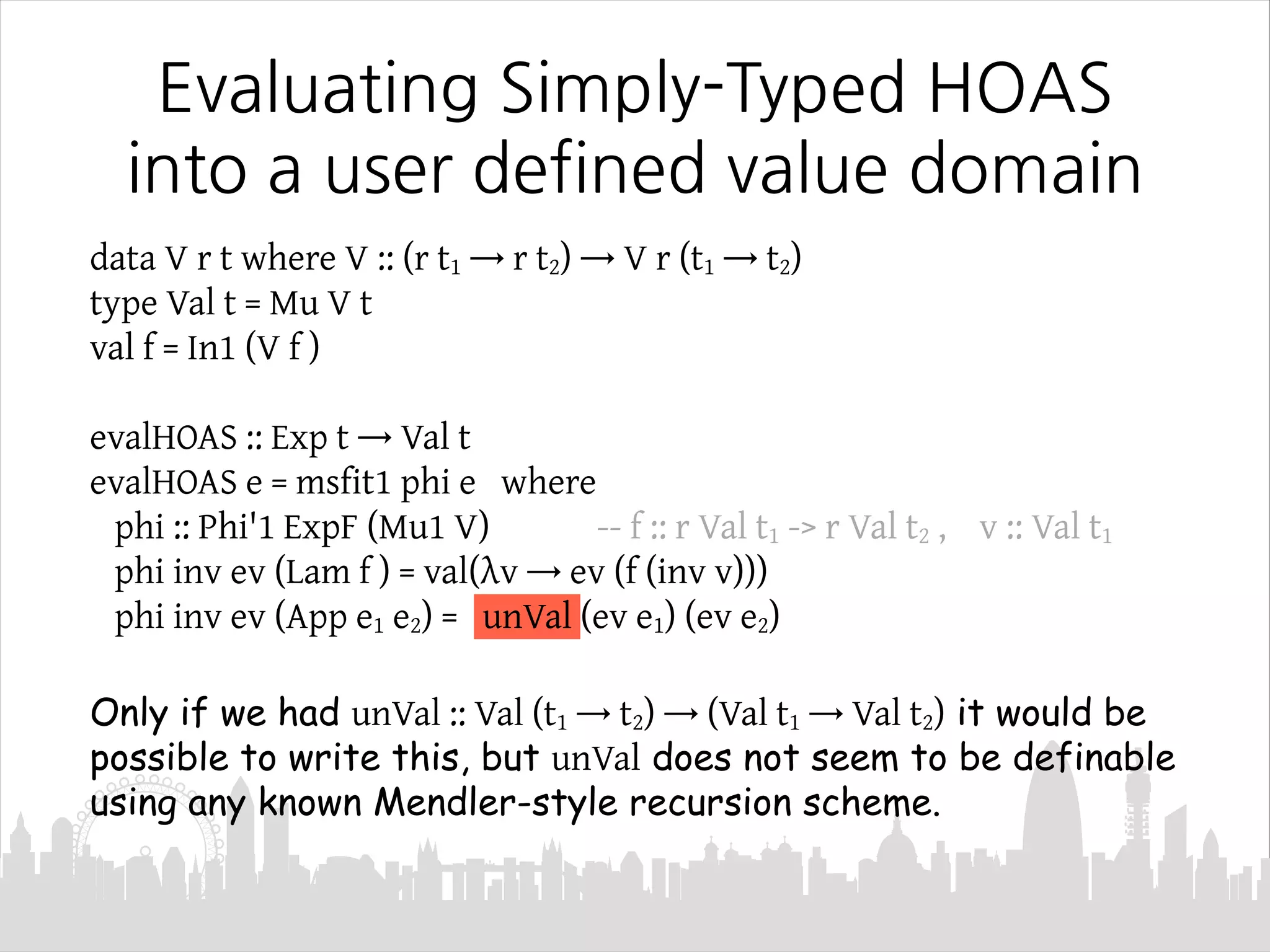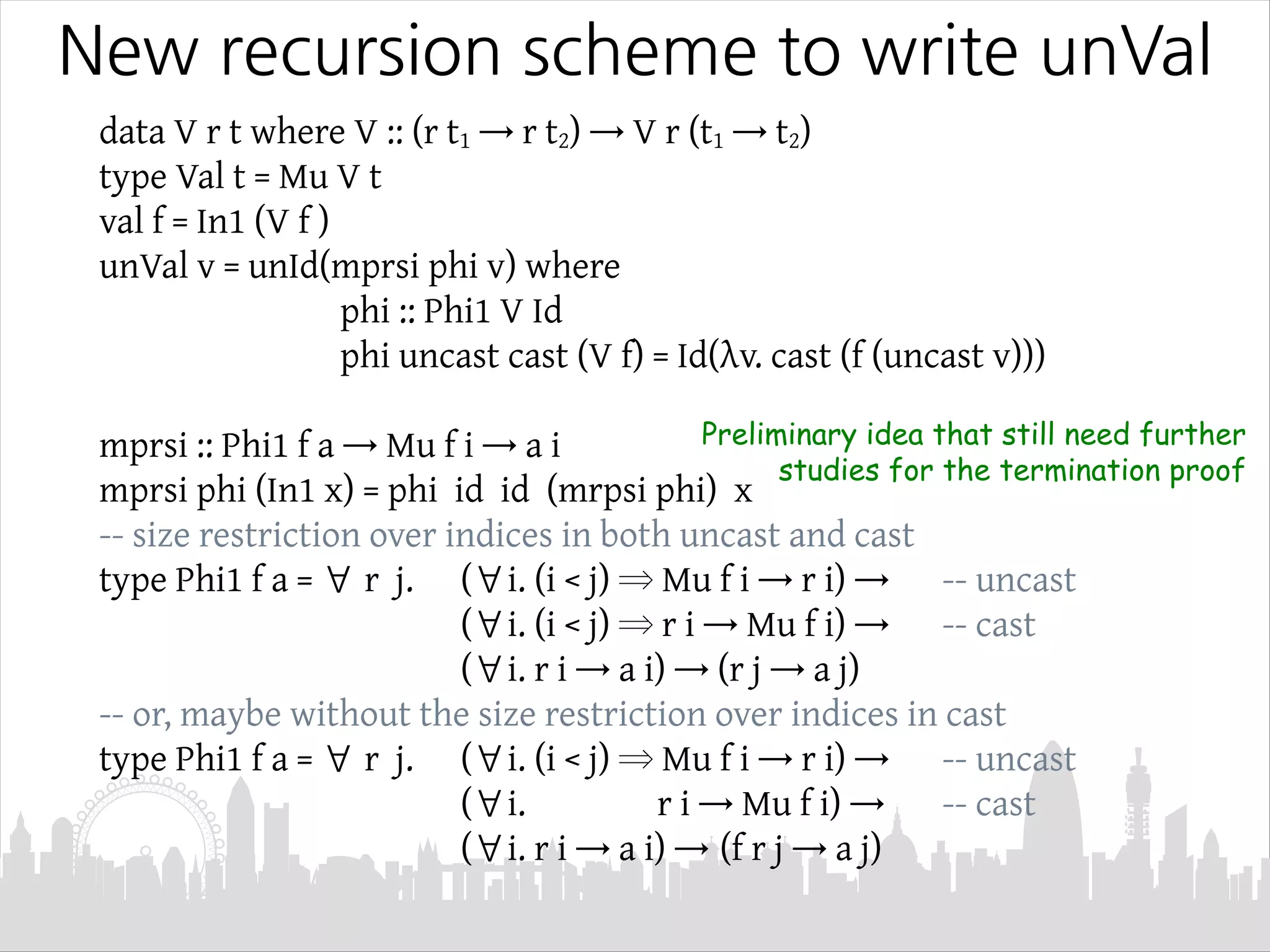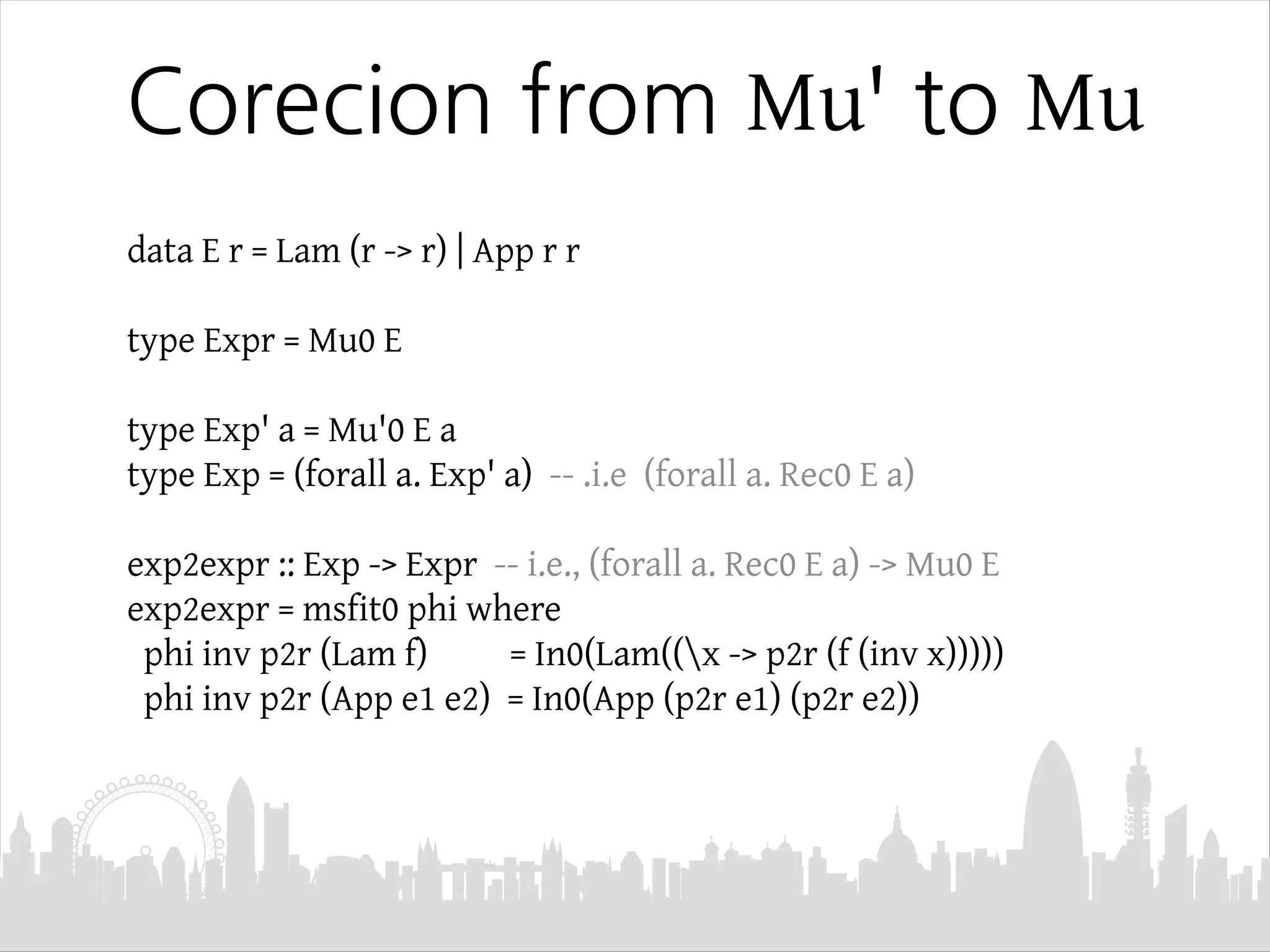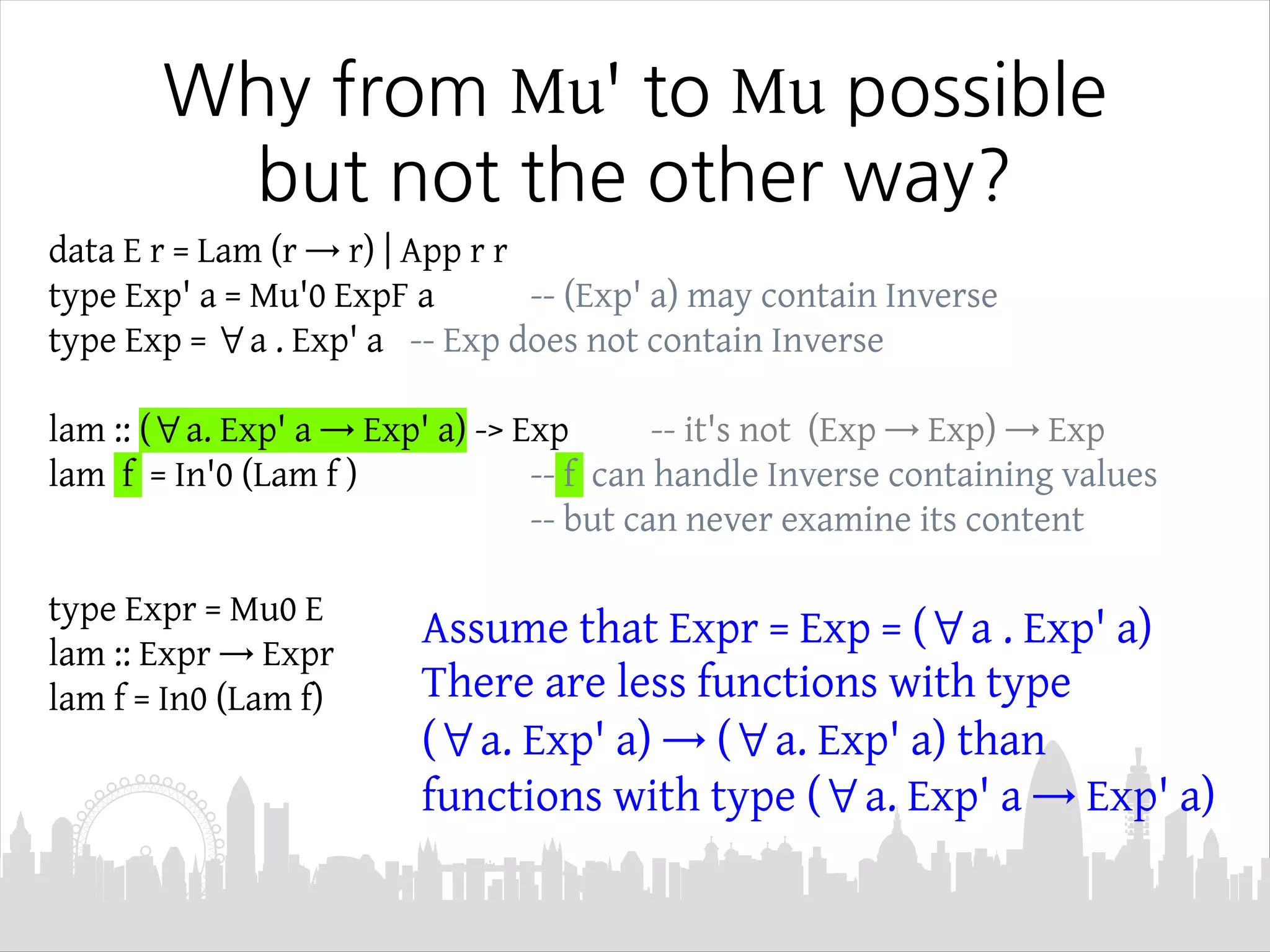This document discusses Mendler-style recursion schemes for mixed-variant datatypes. It introduces Mendler-style iteration (mit) and iteration with a syntactic inverse (msfit). msfit allows formatting of untyped and simply-typed higher-order abstract syntax (HOAS) by evaluating at different kinds. A new recursion scheme is proposed to define a function for evaluating simply-typed HOAS into a user-defined value domain. The relationship between Mu and Mu' fixed point types is also discussed.
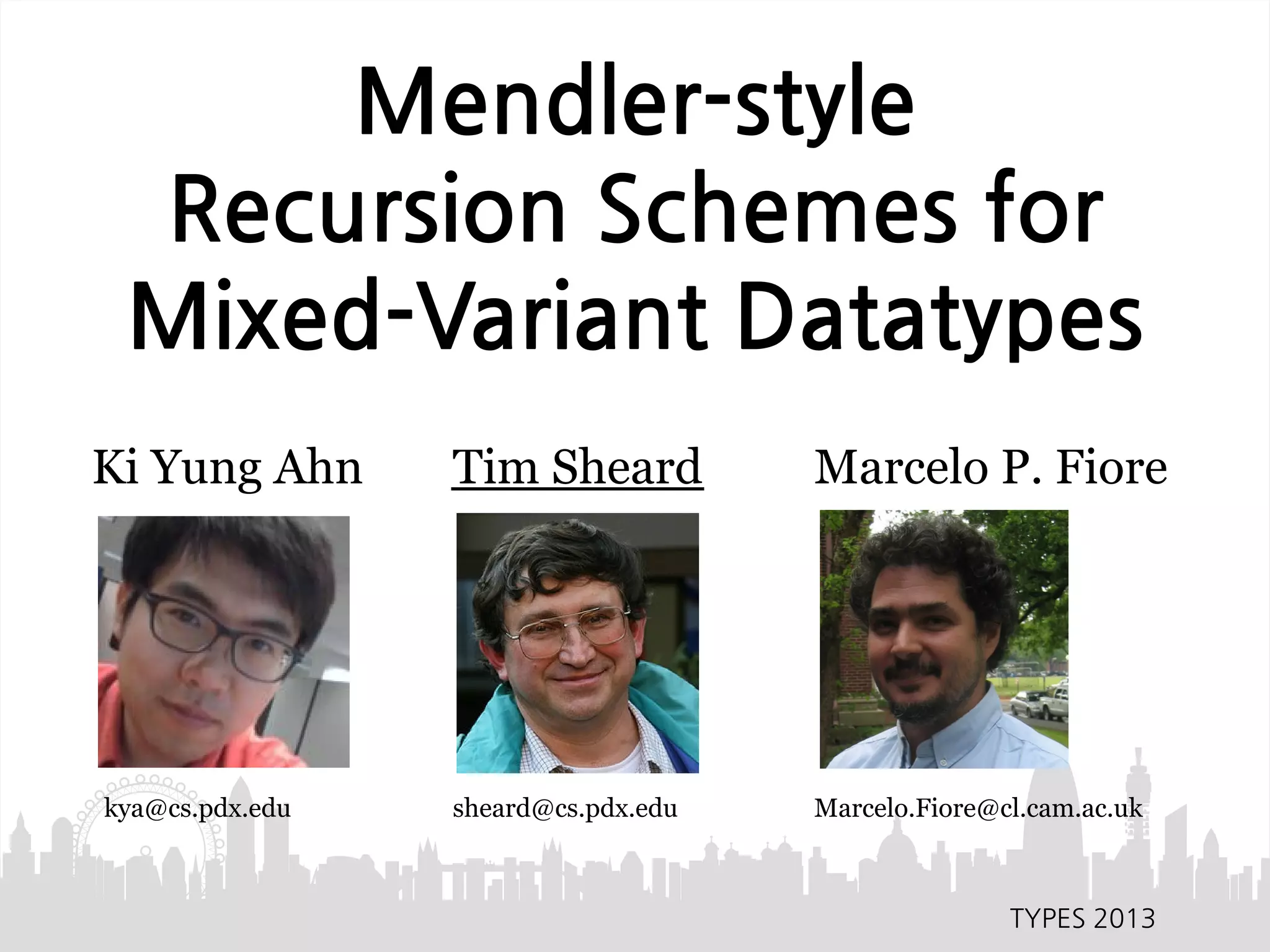

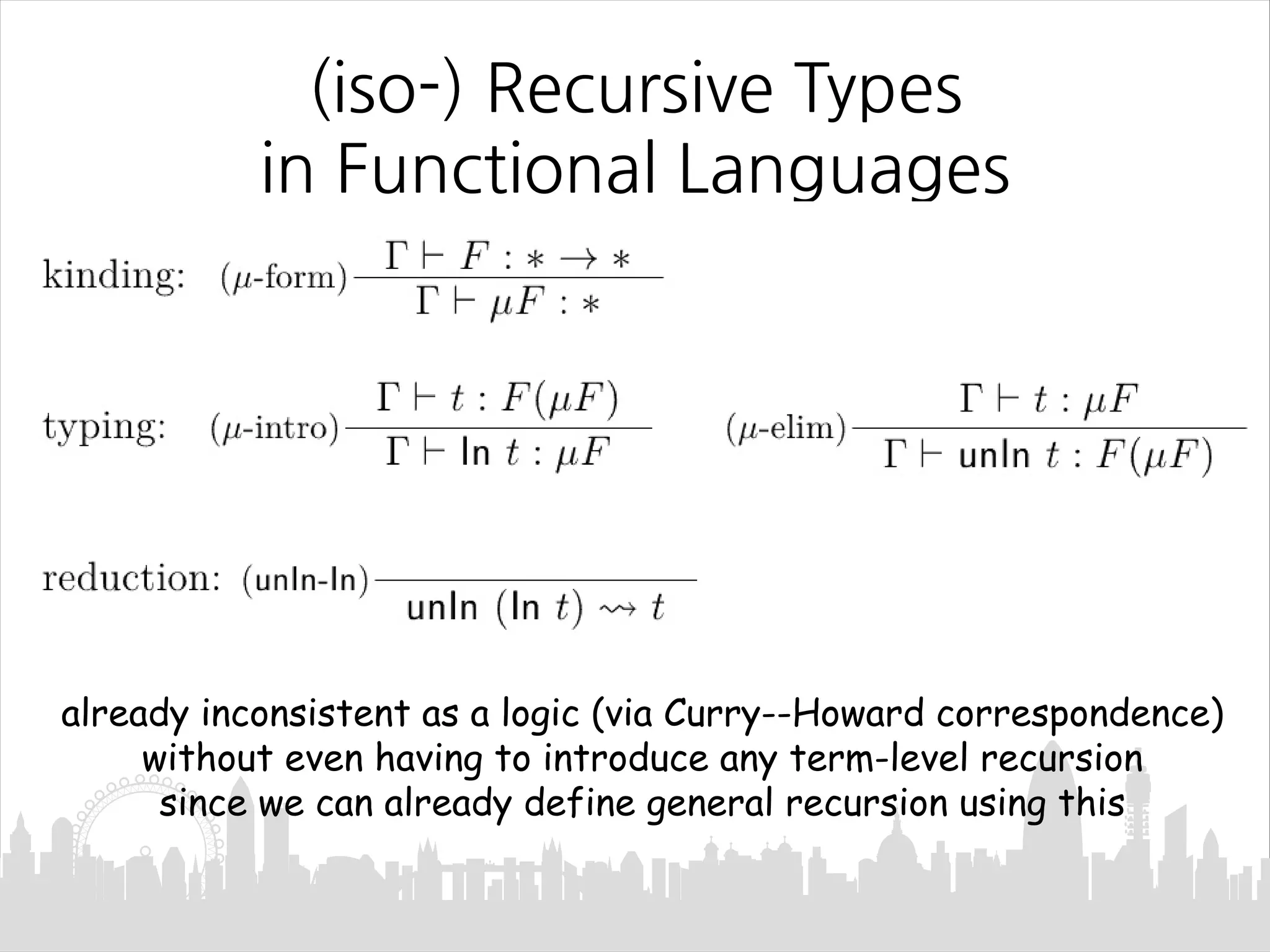
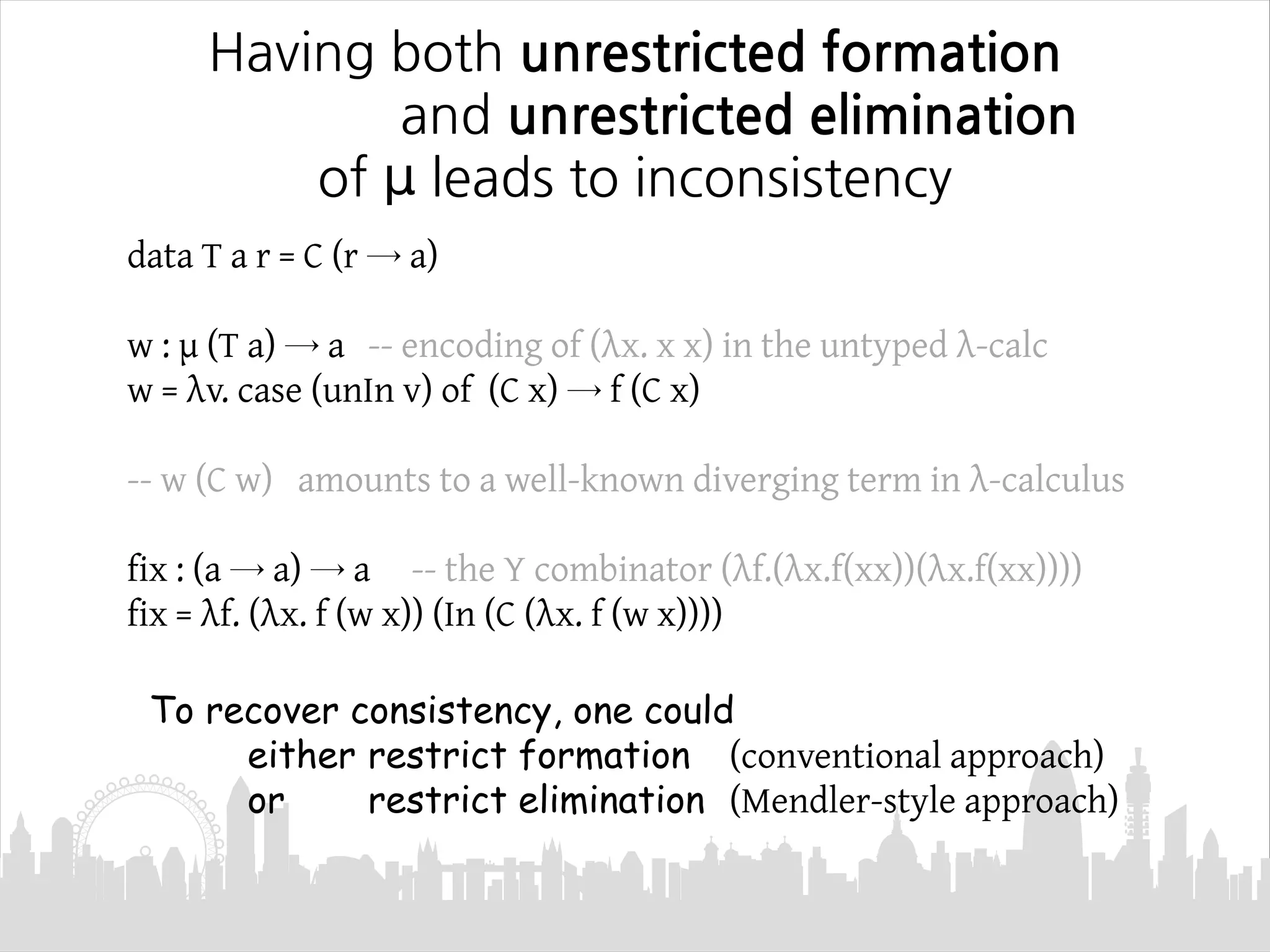
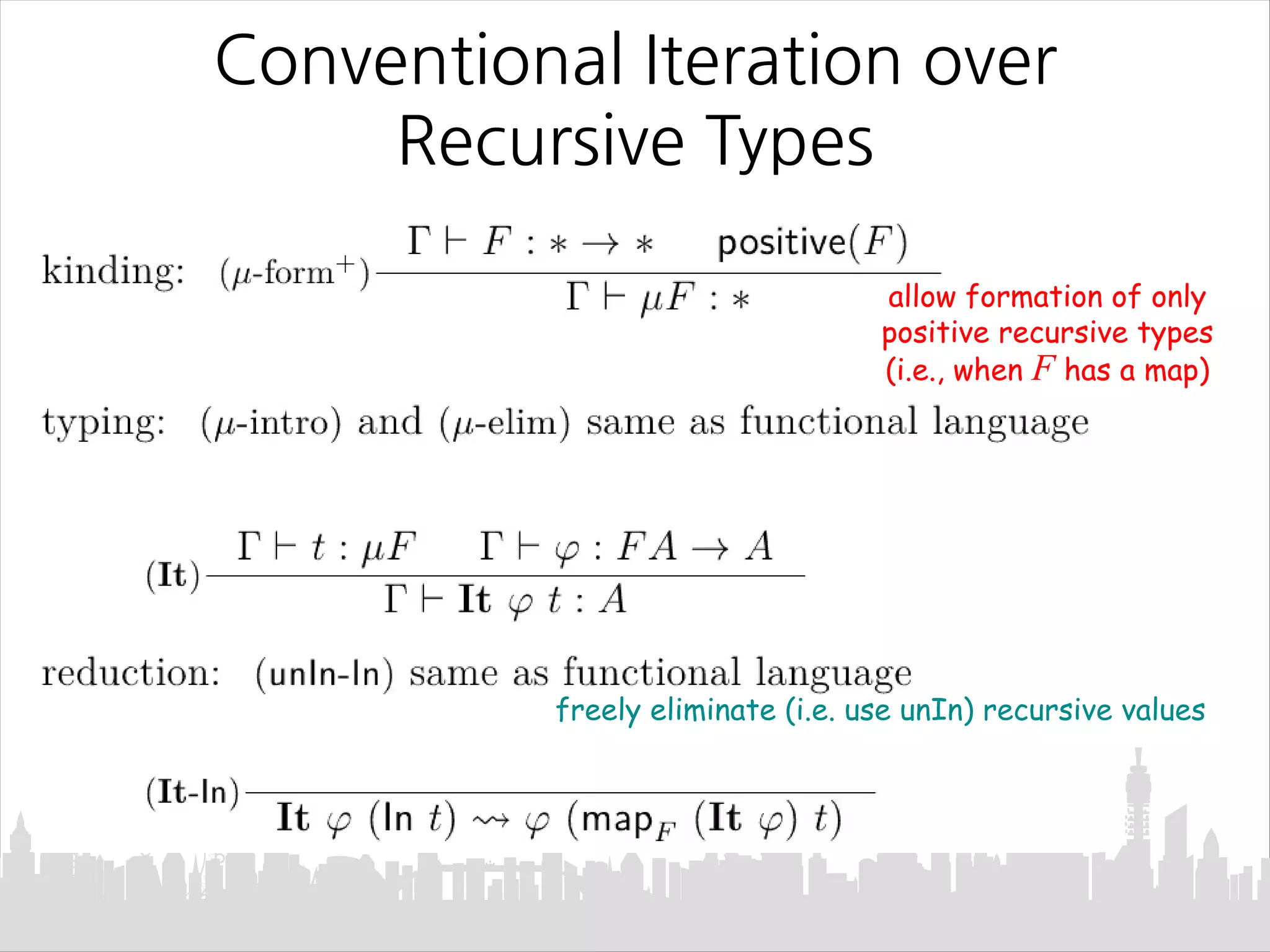
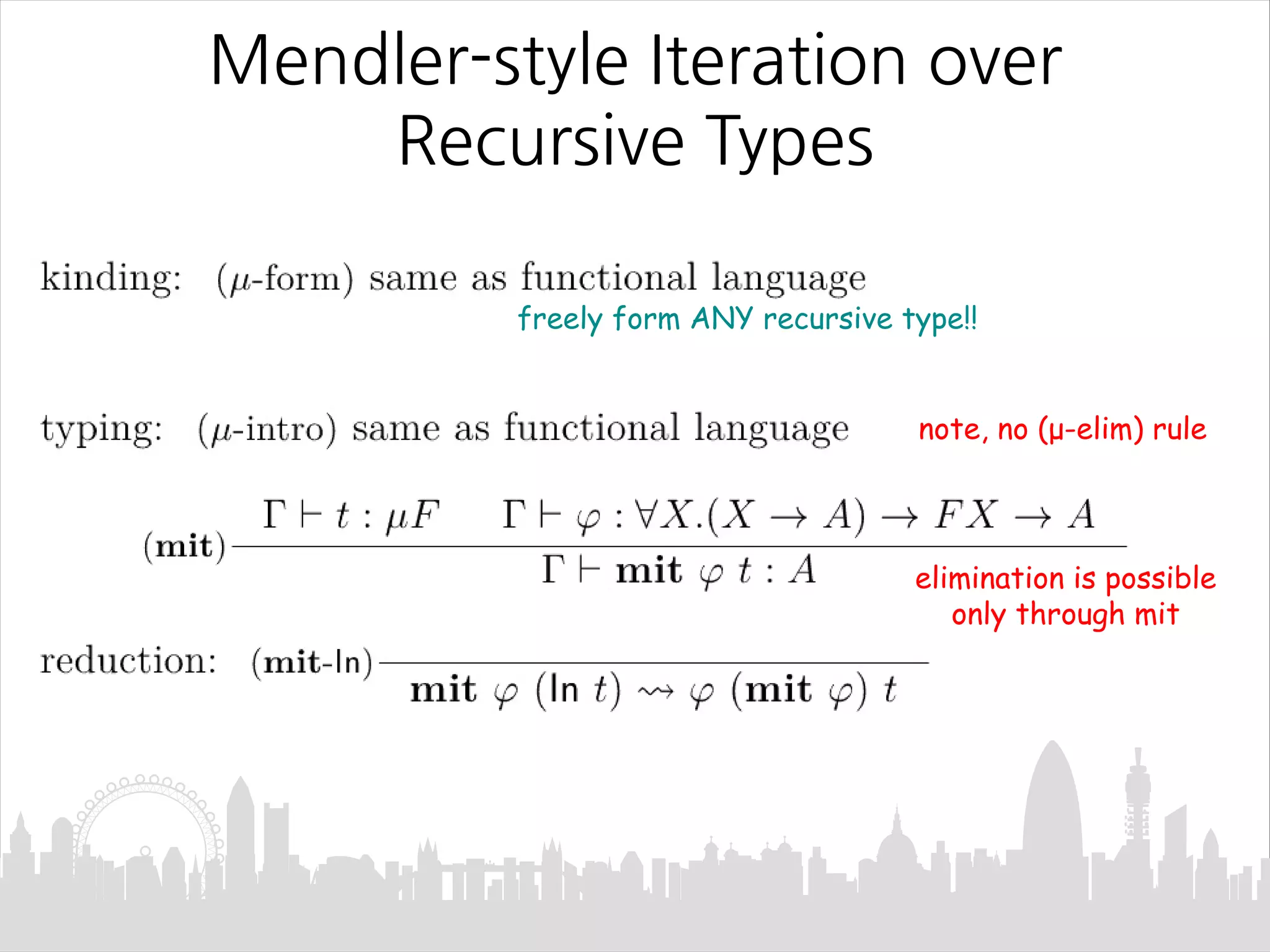
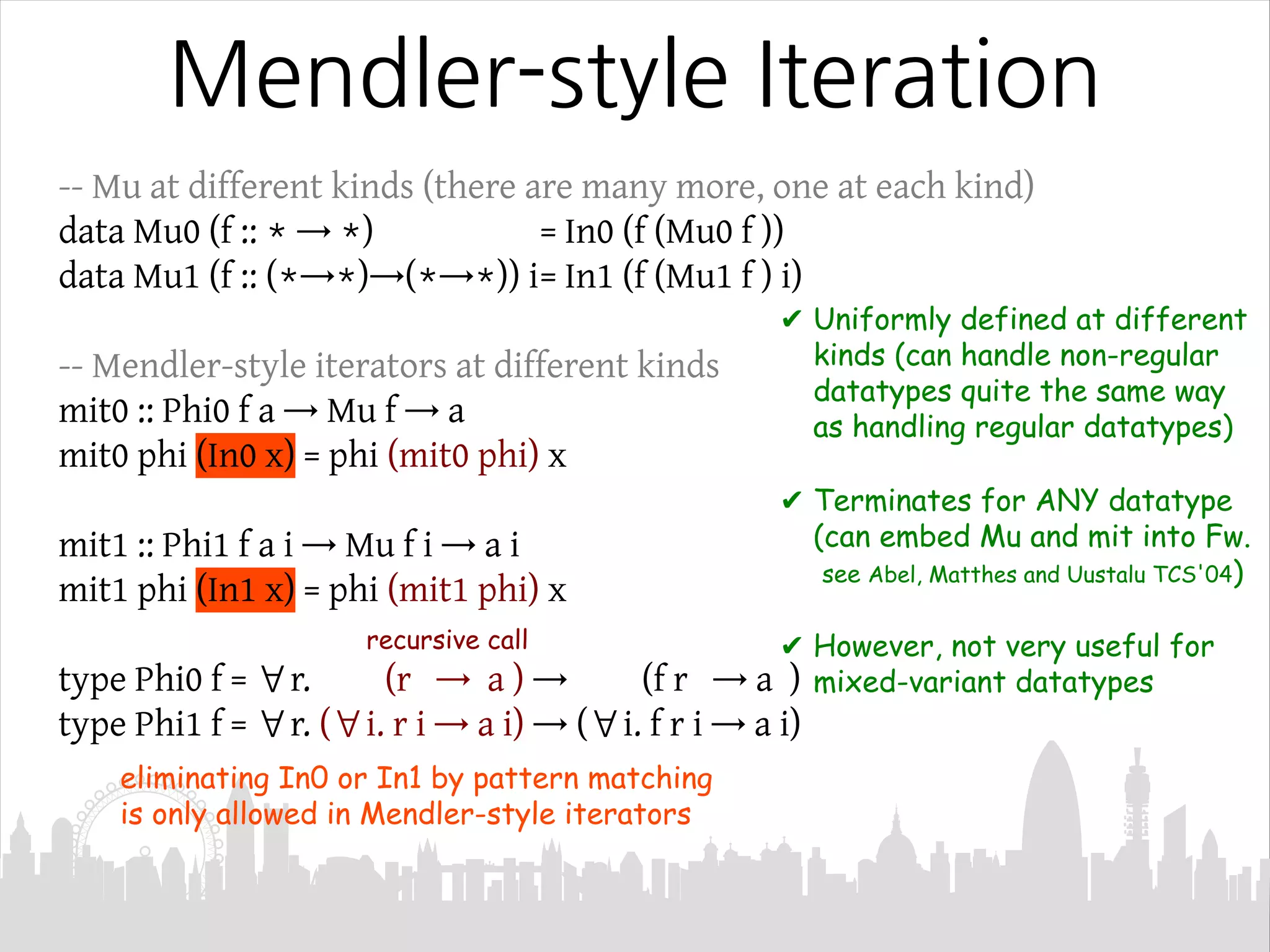
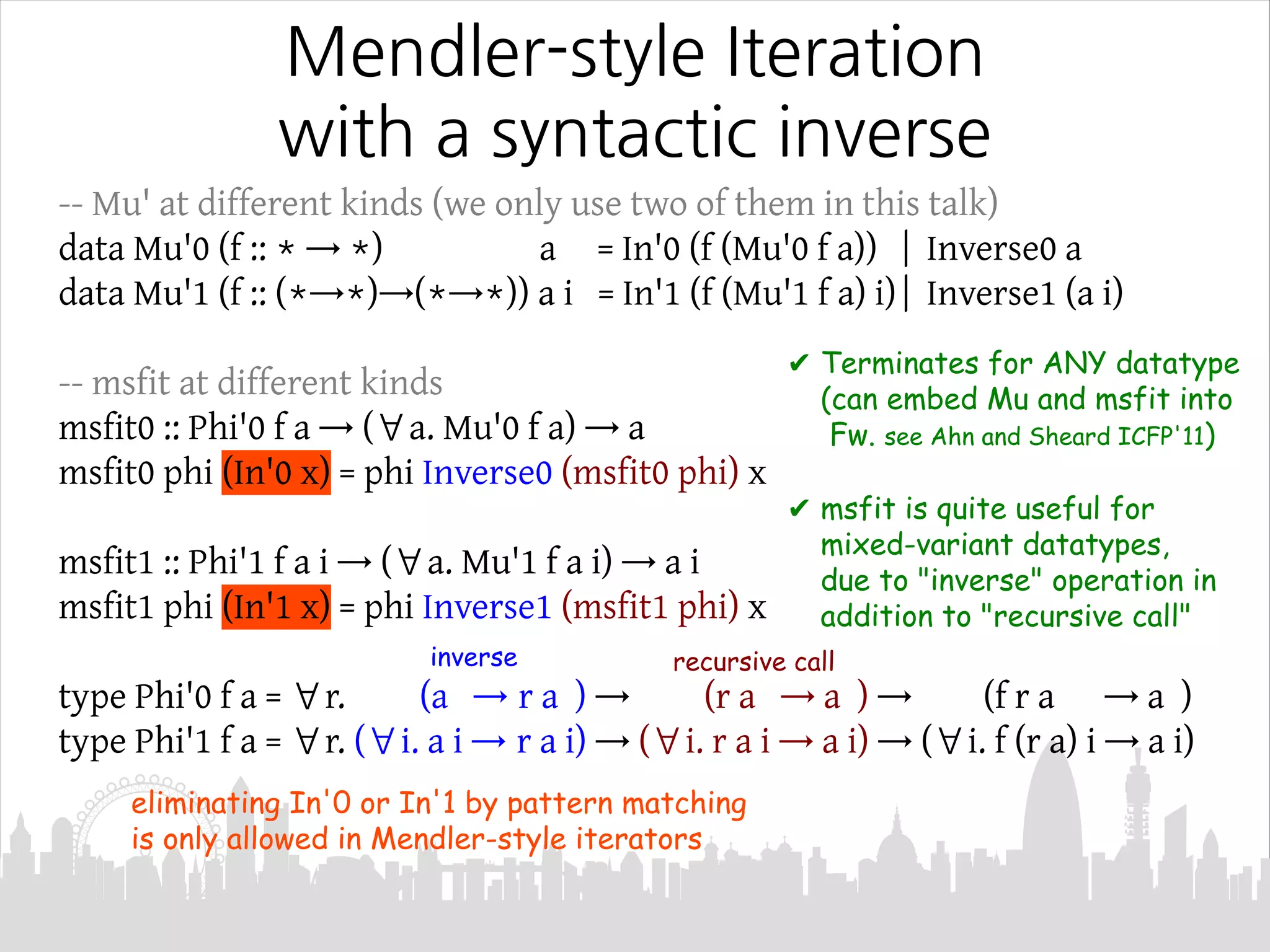
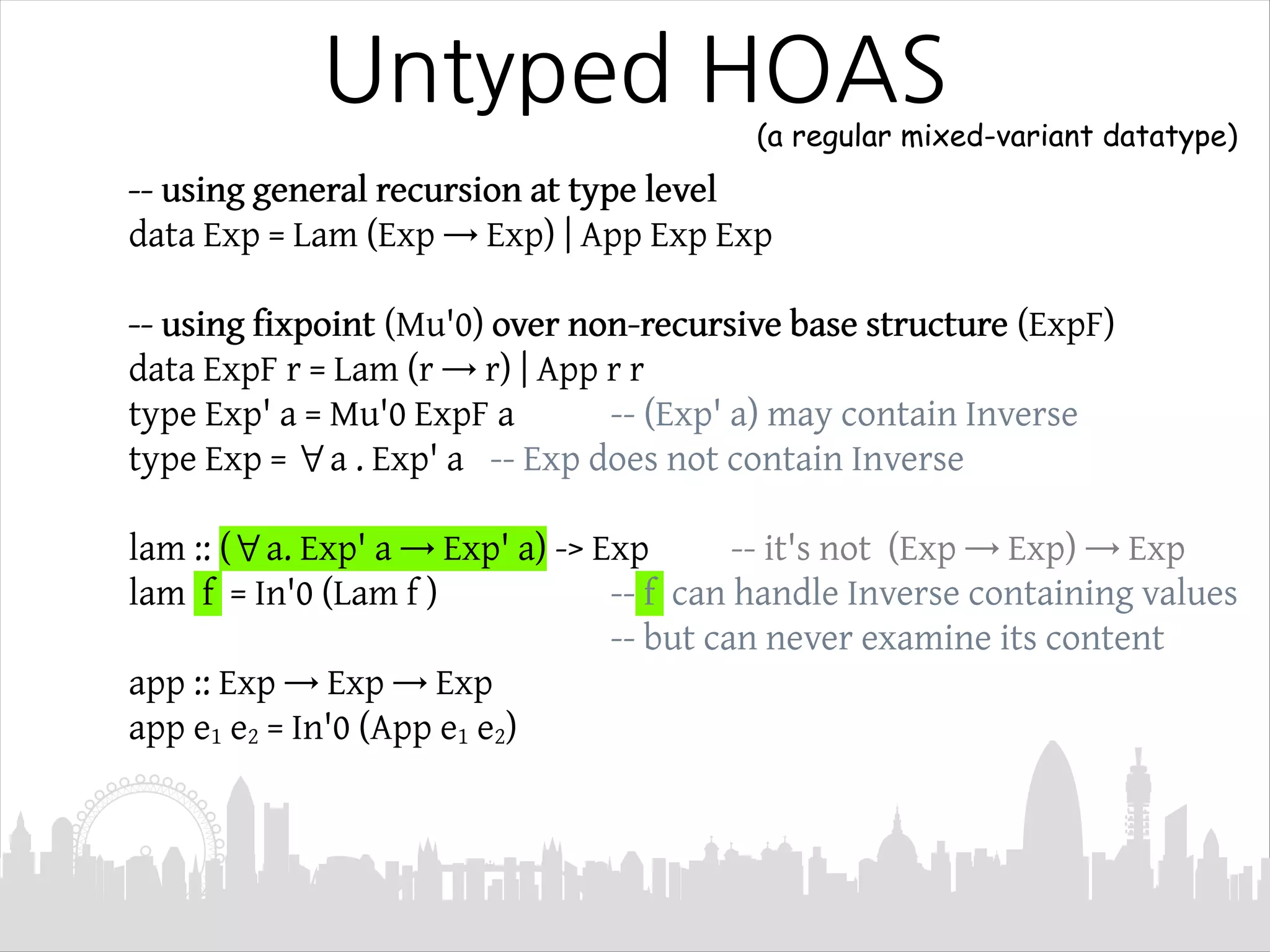
![Formatting Untyped HOAS
using msfit0 at kind *
showExp :: Exp → String
showExp e = msfit0 phi e vars where
phi :: Phi'0 ExpF ([String] → String)
phi inv showE (Lam z) =
λ(v:vs) → "(λ"++v++"→"++ showE (z (inv (const v))) vs ++")"
phi inv showE (App x y) =
λvs → "("++ showE x vs ++" "++ showE y vs ++")"
type Phi'0 f a = ∀ r. (a → r a) → (r a → a) → (f r a → a)
vars = [ "x"++show n | n<-[0..] ] :: [String]
recursive callinverse](https://image.slidesharecdn.com/myslide2-130724224747-phpapp02/75/Can-two-fixpoint-types-in-Mendler-style-unite-10-2048.jpg)
